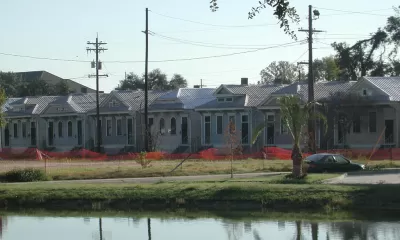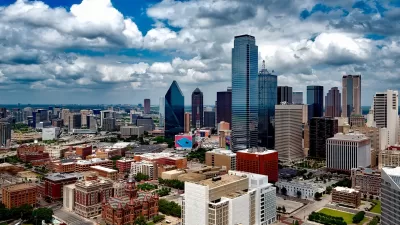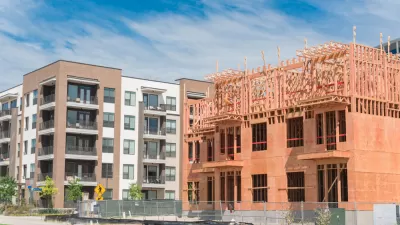Dallas provides the setting for a deep exploration of shotgun houses. The city keeps knocking them down, but according to this architecture critic, they could play a key role in solving the city's affordable housing crisis.

"It should come as no surprise that in Dallas, a city known (or perhaps notorious) for its mansions and McMansions, the lowly shotgun house has become an endangered architectural species," writes Dallas Morning News Architecture Critic Mark Lamster.
"A combination of obsolescence, neglect and development has pushed the shotgun house to the brink of extinction in Dallas," adds Lamster, which is "an unacceptable loss of history."
But Lamster isn't only tackling the historic preservation angle in bringing up the subject of shotgun houses. Instead, Lamster suggests that shotgun houses should be utilized as a key solution in Dallas' housing crisis.
First, more thorough research is needed to build a better record of shotgun house construction. Tara Dudley, a professor at the University of Texas at Austin, is making some of the first systematic efforts in that direction. Here is where a deep history and explanation of the traditional role of shotgun houses in cities like Dallas and New Orleans begins, but also far beyond.
The shotgun's simplicity made it easy to adapt and embellish. Those looking to elevate the status of a home could add architectural elements — Greek Revival columns, say, or Victorian gingerbread detailing.
A shotgun house could be expanded to the side or given a second story in the rear, and was often dubbed a camelback because of its humped appearance. Doors could be placed on center, or offset to the left or right, and roof styles became increasingly complex, moving from the simple gable, to the hip, to the jerkinhead — a squared-off hip.
Lamster writes in reported in feature-length detail, so there is a lot more to learn and explore.
FULL STORY: How tiny shotgun houses can help solve Dallas' housing crisis — if we'd just stop knocking them down

Alabama: Trump Terminates Settlements for Black Communities Harmed By Raw Sewage
Trump deemed the landmark civil rights agreement “illegal DEI and environmental justice policy.”

Planetizen Federal Action Tracker
A weekly monitor of how Trump’s orders and actions are impacting planners and planning in America.

The 120 Year Old Tiny Home Villages That Sheltered San Francisco’s Earthquake Refugees
More than a century ago, San Francisco mobilized to house thousands of residents displaced by the 1906 earthquake. Could their strategy offer a model for the present?

San Francisco Opens Park on Former Great Highway
The Sunset Dunes park’s grand opening attracted both fans and detractors.

Oregon Legislature to Consider Transit Funding Laws
One proposal would increase the state’s payroll tax by .08% to fund transit agencies and expand service.

Housing Vouchers as a Key Piece of Houston’s Housing Strategy
The Houston Housing Authority supports 19,000 households through the housing voucher program.
Urban Design for Planners 1: Software Tools
This six-course series explores essential urban design concepts using open source software and equips planners with the tools they need to participate fully in the urban design process.
Planning for Universal Design
Learn the tools for implementing Universal Design in planning regulations.
Clanton & Associates, Inc.
Jessamine County Fiscal Court
Institute for Housing and Urban Development Studies (IHS)
City of Grandview
Harvard GSD Executive Education
Toledo-Lucas County Plan Commissions
Salt Lake City
NYU Wagner Graduate School of Public Service





























